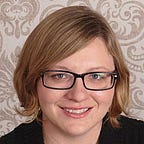Using ABMs to Model Financial Bubbles
Since the early 2000s, researchers have been able to successfully predict markets models using agent based modeling. One of those is Matthew Oldham, a Master’s student in Computational Social Science (CSS) at George Mason University.
Oldham is building models to understand the financial crises of the 20th and 21st centuries. In building his model of 20th and 21st century crises, he used the global financial crisis of 1720 as a point of inspiration also know as the South Sea Bubble.
To grossly summarize the South Sea Bubble, England passed the South Sea Bill passed in 1720, which gave the South Sea Company a trade monopoly in South America. Shares in the South Sea Company ballooned on the speculation. This speculation led to a bubble that involved many companies, which eventually burst and a lot of people lost their money.
To learn more, what this adorable cartoon:
To model the South Sea Bubble, Oldham borrowed from the El Farol Bar model (Arthur 1994). With this influence, Oldham creates a market model with agents that have memory and a number of strategies available to each agent. The agents represent a group of traders in a coffeehouse during the time period of the South Sea Bubble. The information in the coffeehouse updates daily. There were a total of six companies that were at the center of the bubble.
Building upon this, Oldham proposes a model for this thesis where agents have three sources of information: private, public, and neighbors, where relationships are a network. The trust between informational sources is updated with each step. The purpose of this approach is to ask questions like:
- If have a trust in one person and you follow that person and that person says... invest invest invest, and then they say don’t invest --- then all trust in that person collapses. If that person is highly influential in the network, could that cause a major collapse?
- Do agents with high betweenness survive bubble better?
- With a random network, do isolates do better OR worse than the rest of network? Should you follow your network or purposefully ignore them?
Oldham is currently in the middle of this research and has built a basic model to test some of his hypotheses.
